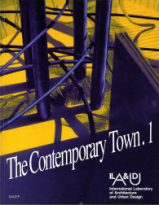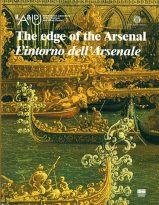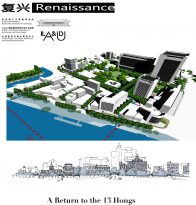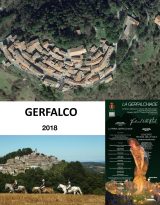About ILAUD
The International Laboratory of Architecture and Urban Design, ILAUD is a free association – founded in Italy in 1976 by Giancarlo De Carlo – among Universities, cultural institutions, individual persons and scholars whose interests are focused on the problems of human habitat and environment.
ILAUD activities are carried on through laboratories based on studio work, seminars and lectures, both on-site and online. Laboratories take place where there are contemporary issues particularly relevant that must be studied in depth, such as increasing pollution, migratory processes, growing urban society, endangered nature etc.
The International Laboratory of Architecture and Urban Design, ILAUD is a free association – founded in Italy in 1976 by Giancarlo De Carlo – among Universities, cultural institutions, individual persons and scholars whose interests are focused on the problems of human habitat and environment.
ILAUD activities are carried on through laboratories based on studio work, seminars and lectures, both on-site and online. Laboratories take place where there are contemporary issues particularly relevant that must be studied in depth, such as increasing pollution, migratory processes, growing urban society, endangered nature etc. Design is used as a tool for exploring issues and suggest tentative solutions that can be useful also for other cases. Research projects and studios on these issues are further developed on a more permanent basis by the Schools of Architecture and Planning associated with ILAUD around the world.
ILAUD current activity focuses on international workshops on site and online, online courses and seminars, e-learning platform, consulting activities for real projects, support for growing educational institutions, platform for debates on contemporary issues related to architecture and urban planning and editorial activities.
ILAUD aims to approach these issues in an original and innovative way which can also produce positive and realistic answers to existing problems. Its objective is to suggest possible solutions that are neither produced by current market interests nor academic dreams, and that can contribute to solve specific issues.
Themes and problems that have a strong local identity and at the same time are common to other regions of the world.
ILAUD exists since 1976 and has built over time a very large community and network of people around the world, a human capital that is till today the incredible legacy of ILAUD’s work over the years.
ILAUD had in its history three main phases. Today ILAUD is in its third phase and acts globally both online and on-site, organizing workshops, seminars, debates, projects, editorial activities. From 1976 to 2005 the activities were almost all held in Italy whereas from 2006 till 2019 activities were organized internationally but just on-site in the most important emerging countries such as Latin America, Asia, Africa.
1976-2005
From 1976 to 2005 over 30 European and North American Schools of Architecture and Planning, with well over 1,000 students have participated to ILA&UD’s activities.
The main fields of exploration in those years have been:
- the reuse of the urban and architectural heritage
- users’ participation in the design and planning processes
- multiplicity of language vs eclecticism in architecture
- the requalification of the contemporary town
- reading and design of the physical environment
Besides the research activity, ILA&UD was commissioned two urban projects, one the restructuring of a district close to the old harbour of Genoa, the other for the reuse of an abandoned industrial complex in the town of Pistoia in Tuscany.
The evolution of ILA&UD’s research in the field of urban design is quite clear and consistent: it unfolds from users’ participation in the design process, the re-use of existing buildings, the study of the hinge between historic centre and new developed areas and how to insert the quality of the former into the latter.
The initial issue of participation developed in time in the notion of ‘reading’, that was considered a possible tool for the understanding of the nature of a place, its contradictions, its history, its social life, etc whenever it is not possible to establish a direct form of participation.
Giancarlo De Carlo describes it as follows.
“First of all we start with the ‘reading’ of the places, extending the perspective as much as possible and at the same time focusing on their specific characters. If one can read the great palimpsest of the city and the territory one is able to understand everything: the events that occurred through time, the history, the social and cultural development, the sense and the role of the organisational systems and of the architectural forms. But in order to read one needs to be able to look in the depth of the stratifications, to discover and select critically the most significant signs; one needs to design.
Our design is ‘tentative’, meaning that it does not seek for univocal solutions but to match confront the project area with series of hypotheses that unveil its substance and open up the process of its transformation; at the same time they ‘tempt’ it and drive it to talk about its capacity of resisting to change, of how it can be changed in order to attain structures and forms that are appropriate to the circumstances and corresponding to the expectations.“
In the first years ILA&UD operated in Urbino, then it moved to Siena, back to Urbino, to San Marino and finally to Venice. Each of these places gave the opportunity to define the theme of research: in Urbino (1976-1981) it started out with the study of the edge of the city, the area of transition where the historic centre and the new expansion meet. The next step was the redesign of the system of open spaces inside the city. When ILA&UD moved to Siena, at the beginning the design issue was focused on the insertion of a contemporary architectural language in the historic fabric; but the real challenge in the following years was the re-use of the old hospital of Santa Maria della Scala, in the process of being emptied of its activities and of finding a new use. After four years there was nothing left to say about the hospital of Santa Maria della Scala; at the same time it seemed necessary to start working on the “contemporary town”, by proposing interventions for the qualification of a district in the suburbs of Siena. A problem of great relevance for our present time: how to design a new part of the contemporary town (a peripheral district, a suburb, a new human settlement in a virgin area) in such a way that, once built and inhabited, it is pleasant, meaningful, just like the towns of the past.
2005-2019
After the death of Giancarlo De Carlo in 2005 ILA&UD’s way of working was reconsidered and restructured.
From a letter Paolo Ceccarelli (who since 2005 has taken over the running of ILA&UD) wrote to those who were concerned that the experience was not lost:
“Ever since the discussion about either ending or continuing ILA&UD started after GDC’s death last Summer I received many letters supporting the idea of going along with it. I also met a number of people from different countries whom I talked with about ILA&UD, of its possible future role, of its contents and aims, of its organisation. I have always found great interest in the projects for ILA&UD’s future development.
ILA&UD has always tried to approach particularly relevant themes concerning architecture and urban design. This has been done referring mainly to the experience of Western, European and North American, societies. The approach has always been very attentive to cultural pluralism and participation of all social groups. Research has also been carried on with the contribution of different approaches, such as those of writers, musicians, artists as well as those from different disciplines: philosophy, history, science, etc. I believe these are values that shouldn’t be lost, but need to be expressed differently because it is useless to remind that the world has changed in the last 30 years. Attitudes that in the 1970s were unconventional, and anticipated new needs are now widely shared and diffused; innovative approaches have become routine; some issues are no longer so relevant, while other, completely new ones, have in the meantime emerged.”
The crucial issues (among the most urgent and at the same time difficult ones the world is facing) ILA&UD intended to tackle could no longer be approached from a prevailingly European and North-American standpoint. It was necessary to look at what was happening and will happen in the cities of the Asiatic, Latin American and African regions in order to understand the meaning and influence of the ongoing processes.
Therefore ILA&UD in 2005 started again its activities, first of all with the inclusion of a number of Universities from countries other than Europe and North America such as China, Japan, India, Argentina, Brasil, Chile, South Africa.
The aim was to prove that the same issue can be approached from different points of view, with positive outcomes, generating new methodological approaches and design hypotheses.
As in the past, design is used as a tool for putting forward ideas that can be discussed and possibly be investigated further but also as a means to bring out differences and/or affinities among different cultures.
The Laboratories held since 2005 have been Buenos Aires, Shahjahanabad, Curitiba, Guangzhou, Kanazawa, Suzhou, Jericho; since 2012 ILA&UD has also continued to organise workshops and seminars in Urbino, the town where it was born in 1976. Three more workshops were held in Ferrara in 2015 and in the Italian villages of Gagliato and Gerfalco in 2016 and 2017.
ILAUD workshops of the latter second phase had different characteristics from the earlier laboratories:
- Almost all workshops take place outside Italy – in Latin America, due to its strong ties to Europe; in India and the Middle East for their very rich cultural stratifications produced by centuries of history; in China and Japan as innovation laboratories based on an enormous cultural heritage.
- The workshop were held in mega-cities such as Buenos Aires, Delhi, Guangzhou, Shanghai and in recently born cities, such as Curitiba, which are still developing and face unexpected situations. Or on the opposite, they focused on rural villages (and small urban settlements in marginal areas) that tackle with innovative development strategies the difficulties originated by their depopulation and agriculture crisis.
- The workshops did not last several weeks as the Italian laboratories of Urbino, Siena, San Marino, Venice did.
- The topics dealt with the relationship between the built-environment and nature; the relationship between historical structures and modernization; the memory of the past (used as a resource, or cancelled according to convenience); the importance of cultural diversity, as a resource to be protected and used in a positive way.
During this period ILAUD had tight collaborations with Red Alvar – Patrimonio Y Proyecto, a network of Latin American and European Schools of Architecture; the urban design research group of University of Ferrara, University of California, Berkeley and Waseda University, Tokyo and the UNESCO Chair “Urban and Regional Planning for Local Sustainable Development”, ILA&UD extended its operations to Latin America, Africa, Asia, the Middle East. Over the past 15 years ILAUD has cooperated with over 20 Chinese, European, Japanese, Indian, Israeli, Latin American, Palestinian, South African Schools of Architecture and Planning.
ILAUD exists since 1976, and during almost all these years of activities, Yearbooks have been published containing the contributions relating to the work carried out. At the Poletti Library in Modena all the documents relating to these seminars are kept, of which we offer the indexes and which can be consulted in full online at Poletti Library in Modena





















![08 BUENOS AIRES PRINT [Converted] 08 BUENOS AIRES PRINT [Converted]](https://www.ilaud.org/wp-content/uploads/elementor/thumbs/10-PANNELLO-DELHI1_28cm-scaled-p2f7q01edjmawbvc9s9132gnim8sgii0dq1nx10rgg.jpg)







